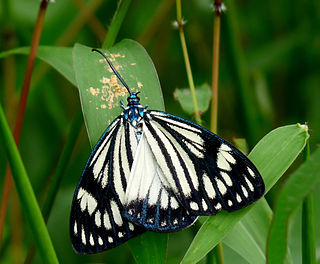
The Zygaenidae moths are a family of Lepidoptera. The majority of zygaenids are tropical, but they are nevertheless quite well represented in temperate regions. Some of the 1000 or so species are commonly known as burnet or forester moths, often qualified by the number of spots, although other families also have 'foresters'. They are also sometimes called smoky moths.

The six-spot burnet is a day-flying moth of the family Zygaenidae.
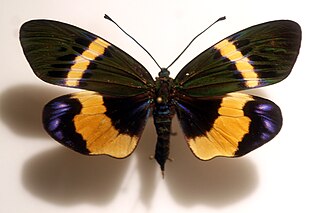
Chalcosiinae is a subfamily of the Zygaenidae, containing many species, mostly little known. Prominent sexual dimorphism, bright aposematic coloration and mimicry complexes are widespread.
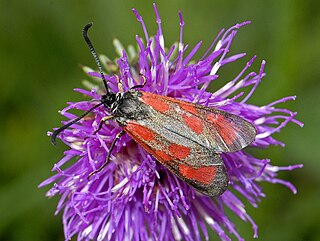
Zygaena loti, the slender Scotch burnet, is a moth of the family Zygaenidae. It is a diurnal moth characterized by a black body, light colored legs, and red spots on its wings. The caterpillars are a yellow-green color and usually molt out of dormancy in late February to early March. The larvae feed on plants from the family Fabaceae until they enter their pupal stage and mature into adults in May to early June. For mating, Zygaenidae exhibit a dual-partner finding strategy, where females use pheromones while assuming a calling position, and males exhibit a patrolling behavior where they utilize both vision and the olfactory receptors in their antennae to locate a potential mate. Although regionally endangered as their population is declining, Z. loti is found all across Europe, inhabiting areas rich in their desired food plants: lime-rich, and characterized by a hot and dry climate. The decreases in their population are likely due to factors such as habitat loss and fragmentation brought on by commercial agriculture and urbanization, as well as global climate change. There are few conservation programs currently focusing on Zygaena loti.

Tajuria is an Indomalayan genus of butterflies in the family Lycaenidae.
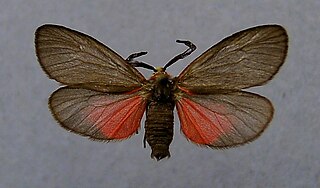
Aglaope infausta, or almond-tree leaf skeletonizer moth, is a moth of the family Zygaenidae.
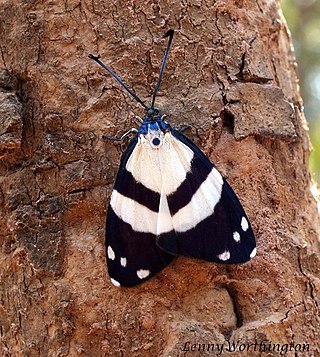
Corma is a genus of moths of the Zygaenidae family.

Pollanisus viridipulverulenta, the satin-green forester, is a moth of the family Zygaenidae. It is found in the eastern part of Australia.
Pollanisus nielseni is a moth of the family Zygaenidae. It inhabits the Australian state of Western Australia, mostly coastal areas, and has brilliantly shiny forewings. The diurnal adults are most active on sunny days. Eggs are laid on the plant Hibbertia spicata, and females touch each egg after oviposition with a tuft of hair on their abdomen, which attaches protective spines. The larvae are brightly coloured and feed on H. spicata before pupation.
Pollanisus subdolosa is a moth of the family Zygaenidae. It is found in Australia in Victoria and from south-eastern Queensland to New South Wales.
Rhagades amasina is a moth of the family Zygaenidae. It is known from Bulgaria (Sakar), Greece, Turkey, northern Syria and Lebanon.
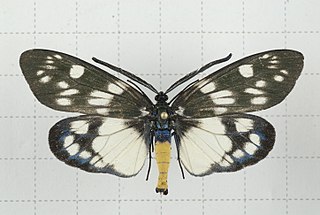
Eterusia aedea, the red slug caterpillar, is a species of moth in the family Zygaenidae. It was described by Carl Linnaeus in his 1763 Centuria Insectorum. It is found in Sri Lanka, India, Nepal, Taiwan, Japan and China.

Artona is a genus of moths of the family Zygaenidae.

Neochalcosia remota is a moth in the family Zygaenidae. It is found in China, Korea, Japan and Taiwan. The habitat consists of parks and areas with Quercus species.
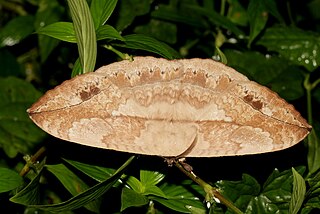
Eupterote is a genus of moths in the family Eupterotidae. It was first described by Jacob Hübner in 1820.

Acoloithus falsarius, or Clemens' false skeletonizer, is a moth species in the zygaenid subfamily Procridinae. The species occurs in North America and was described by James Brackenridge Clemens in 1860. A. falsarius has Hodges number 4629 and is the type species of genus Acoloithus.

Cadphises is a genus of moths belonging to the family Zygaenidae.
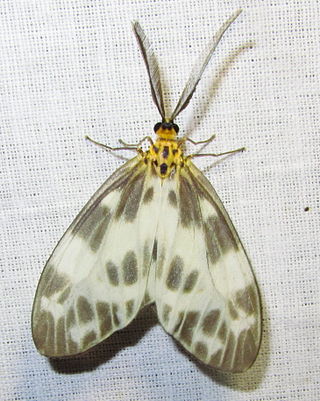
Corma maculata is a species of lepidopteran insect a moth in the family Zygaenidae. It is known from Assam, Bhutan, and Myanmar.















